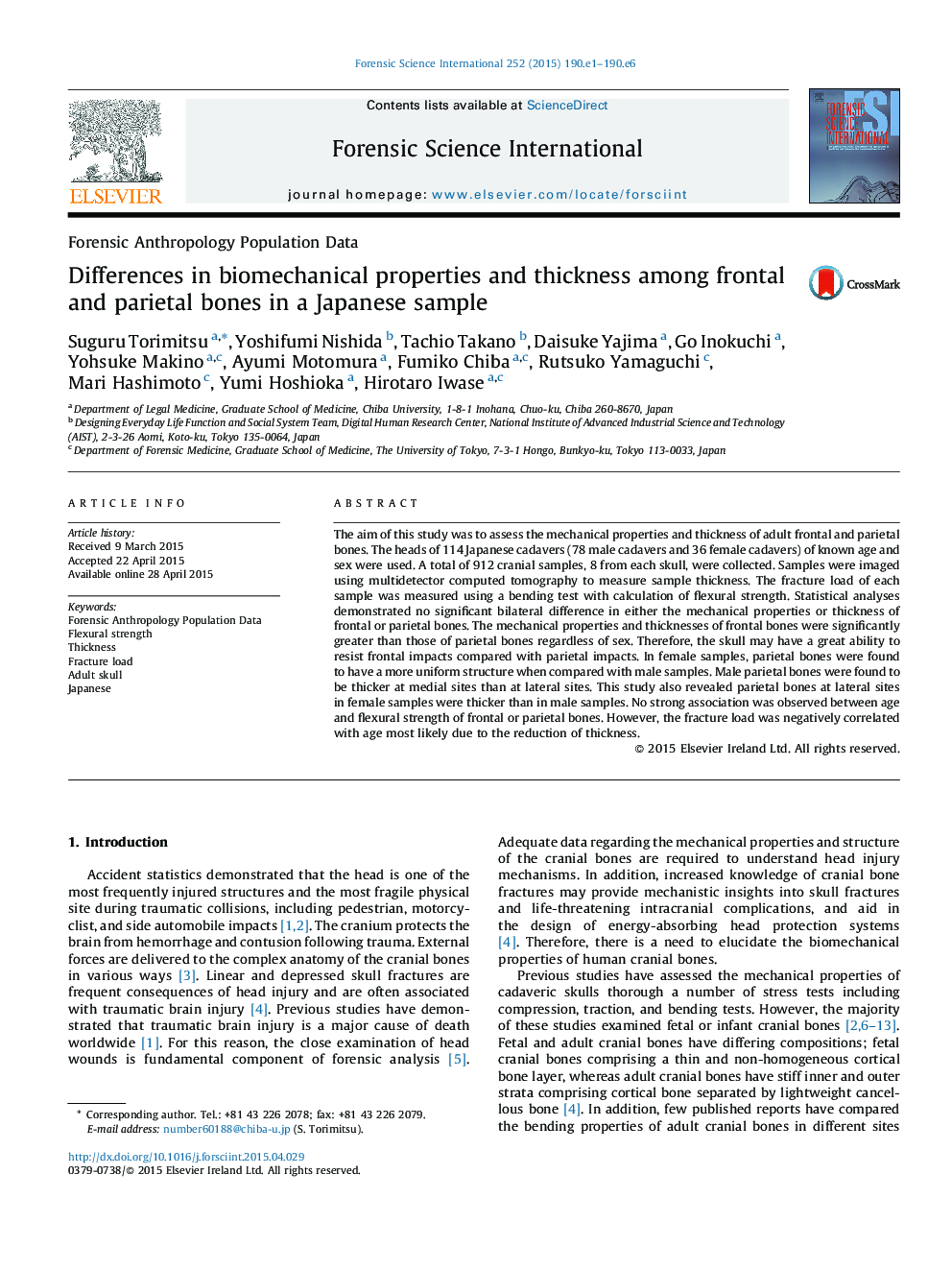| Article ID | Journal | Published Year | Pages | File Type |
|---|---|---|---|---|
| 95387 | Forensic Science International | 2015 | 7 Pages |
Abstract
The aim of this study was to assess the mechanical properties and thickness of adult frontal and parietal bones. The heads of 114 Japanese cadavers (78 male cadavers and 36 female cadavers) of known age and sex were used. A total of 912 cranial samples, 8 from each skull, were collected. Samples were imaged using multidetector computed tomography to measure sample thickness. The fracture load of each sample was measured using a bending test with calculation of flexural strength. Statistical analyses demonstrated no significant bilateral difference in either the mechanical properties or thickness of frontal or parietal bones. The mechanical properties and thicknesses of frontal bones were significantly greater than those of parietal bones regardless of sex. Therefore, the skull may have a great ability to resist frontal impacts compared with parietal impacts. In female samples, parietal bones were found to have a more uniform structure when compared with male samples. Male parietal bones were found to be thicker at medial sites than at lateral sites. This study also revealed parietal bones at lateral sites in female samples were thicker than in male samples. No strong association was observed between age and flexural strength of frontal or parietal bones. However, the fracture load was negatively correlated with age most likely due to the reduction of thickness.
Related Topics
Physical Sciences and Engineering
Chemistry
Analytical Chemistry
Authors
Suguru Torimitsu, Yoshifumi Nishida, Tachio Takano, Daisuke Yajima, Go Inokuchi, Yohsuke Makino, Ayumi Motomura, Fumiko Chiba, Rutsuko Yamaguchi, Mari Hashimoto, Yumi Hoshioka, Hirotaro Iwase,
